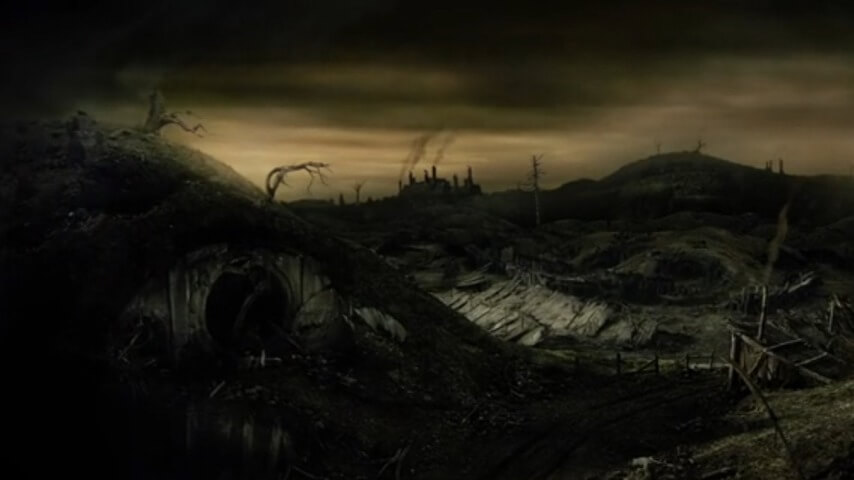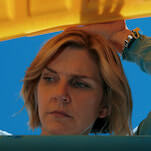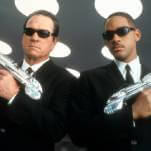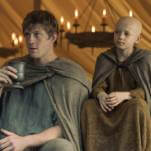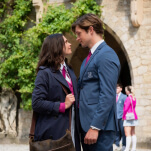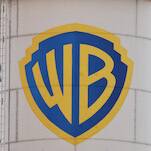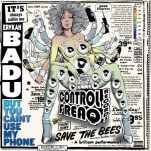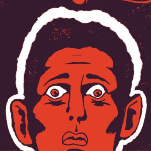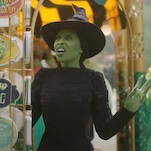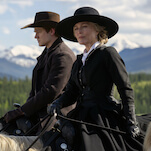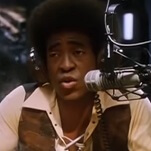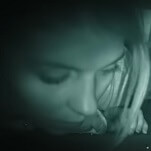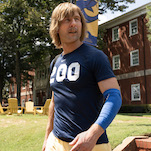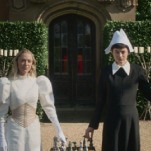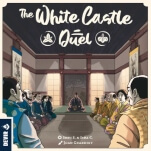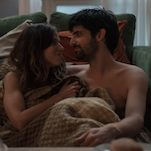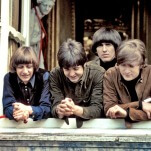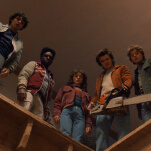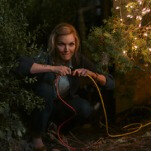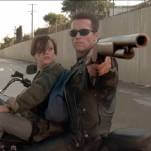In Peter Jackson’s Lord Of The Rings film trilogy, the destruction of the Shire occurs only in dream. The mystic elf Galadriel shows haunted adventurer Frodo Baggins a vision of what should happen if his mission fails: orcs loot the countryside, chaining hobbits into forced labor. A bleak orange sun rises over the hills. Smoke and fire dominate the blasted landscape. But when the Shire is ravaged in J.R.R. Tolkien’s three-volume novel—the final volume of which, The Return Of The King, celebrates its 70th anniversary of publication this week—it is men and hobbits, not orcs, who have done it. The absence of that act of partial self-destruction from the story’s popular imagination casts ripples across its meaning, making The Lord Of The Rings a diminished, less complex work.
This destruction is revealed in one, solemn chapter, titled simply “The Scouring Of The Shire.” In essence, Frodo and his three hobbit friends, Sam, Pippin, and Merry, return after their journey across the kingdoms of Middle-earth. They discover that the hobbits have begun to industrialize the Shire. Ruffians cow the people into compliance with all the regular tools of state power: arrests, murders, cruel and unusual punishments. Merry and Pippin, now something of military men, galvanize the Shire into action, defeating the ruffians and discovering the corruption’s source: the disgraced wizard Saruman.
As the four go deeper into the Shire, Tolkien describes the devastation: “It was one of the saddest hours in their lives. The great chimney rose up before them; and as they drew near the old village across the Water, through rows of new mean houses along each side of the road, they saw the new mill in all its frowning and dirty ugliness: a great brick building straddling the stream, which it fouled with a steaming and stinking outflow. All along the Bywater Road every tree had been felled.” It is a scene of total environmental annihilation; the Shire made into a bleak, dirty place. It is easy to imagine the moment’s cinematic power. The green wilderness and pastoral beauty of the Shire, which Frodo and the others forsook to wander blighted wastes and massive battlefields, has come to resemble that which they worked so hard to defeat.
To be fair, there are more than a few reasons why multiple adaptations have forsaken the chapter. For one, it is sort of an anti-climax, taking place well after the principle plot of Lord Of The Rings is over. Much of the setup for it weaves its way through the opening chapters of The Fellowship Of The Ring, involving minor characters and events that one could also excise without losing track of the main plot. (You also don’t need it to explain Frodo’s eventual departure from Middle-earth, so the book’s supremely moving final moments can remain intact.) The Scouring does resolve the hanging plotline of Saruman’s ultimate fate, since he doesn’t suffer death-by-Wormtongue quite so early in Tolkien’s original narrative, but serves more as a coda than any essential portion of his story. It is easy to understand, from a strict efficiency-based point of view, why both the 1980 animated Return Of The King TV movie and Jackson’s 2003 film omit it.
Yet that is all using the narrow lens of plot. What is “essential” to a story is hardly what is most interesting, or most important, about it. The Scouring of the Shire reflects multiple thematic cores of The Lord Of The Rings, echoing meaning across the novel’s entirety. The book’s environmentalism is threaded throughout. Saruman already represented an industrial threat. Some hobbits’ lack of care and vigilance to their environment, a relentless pursuit of profit, leads to the destruction of their home. Even the places still untouched, which we cannot imagine being destroyed, face the devastation of profit motive.
The cut also makes the book’s final scenes, when Frodo boards the ship at the Grey Havens, lose some of their subtleties. When Sam realizes that Frodo plans to leave, he is filled with dismay: “’But,’ said Sam, and tears started in his eyes, ‘I thought you were going to enjoy the Shire, too, for years and years, after all you have done.'” Replies Frodo, “‘So I thought too, once. But I have been too deeply hurt, Sam. I tried to save the Shire, and it has been saved, but not for me. It must often be so, Sam, when things are in danger: some one has to give them up, lose them, so that others may keep them.’”
The scene reflects both Frodo’s ultimate victory and his most thorough defeat. Evil’s triumph over the Shire was all too brief. In a few short years, much has been replanted and rebuilt. Yet Frodo’s trials have so wounded him that he cannot enjoy it, much less steward it. The destruction of his home is a mirror of Frodo’s heart. As Pippin and Merry straddle worlds, moving between the Shire and the wider world as both warriors and ambassadors; as Sam builds a home and family, restoring the Shire’s garden on the way; Frodo remains alone. Sam’s final words, the words which close the novel, “Well, I’m back,” reflect this loss. Through all the Shire’s green verdancy, something has been hollowed out, something which Sam will not regain until he joins Frodo across the sea.
It is easy to slot the Scouring into a reactionary reading of The Lord Of The Rings. The novel’s racial imagery is an unquestionable part of its legacy, one which any honest criticism of it must account for: The novel’s heroes are warriors of the West, its villains hordes from the East. The orcs themselves were once elves, corrupted through dark magic. In a broad way, The Lord Of The Rings is a fantasy of restoration, where an older, better world regains power over the newer, evil one. With a certain lens, the events of the Scouring lean into this logic in direct terms. Saruman is a foreigner who conscripts other foreigners into strong-arming the honest, decent folk of the Shire. They represent a corrupting influence that the hobbits must purge through violent force.
Although these readings are accurate, they are also a little shallow. For one, Middle-earth is already decaying. Aragorn’s throne is only a partial restoration. The elves are leaving and the forests they steward lose their grandeur with their departure. The books make clear that the Age Of Men, which Aragorn’s reign begins, will oversee the fading of magic from the world. There may be something more pure and eternal awaiting us on the other side, but the world we leave behind will someday die.
The vulnerability of the Shire is part of this theme. Saruman’s destruction of the Shire takes place over a few brief months; it takes years to restore it. When Frodo and crew arrive in the Shire, they find hobbits who are acquiescing and fearful, unquestioning of the rules. When they ask questions about how this came to be, one hobbit comments, “Even in the Shire there are some as like minding other folk’s business and talking big.” When a few hobbits mimic the ruffians, Frodo says, “I hope there are not many more hobbits that have become like this. It would be a worse trouble than all the damage the Men have done.” It is not just that outsiders corrupt a pure world, but that they bring out a corruption that was already present.
The way the Shire saves itself is, in part, an opening up. Sam uses one of his gifts from the elves to restore the Shire. Merry and Pippin travel throughout the region and maintain their ties with both men and dwarves. Preservation can mean change. In fact, it may require it. Making the Shire an untouched place carries a stagnant stench. In Tolkien’s books, nothing can be protected forever, and all requires active vigilance and care. In the films, the Shire is already perfect and needs no change at all.
Jackson’s excision of the Scouring ripples across related media. The video game Tales Of The Shire, released earlier this year, is a prequel, set while Sam and Frodo are still growing up. This sets the Scouring far enough in the future that it cannot affect the proceedings, and without it looming over the recent past. But at the same time, the game takes place in Bywater, a section of the Shire which gets special attention in Tolkien’s Scouring chapter. In the game’s few encounters with Gandalf, he speaks of trials soon to come to the pastoral paradise. But the Scouring is only alluded to, never depicted, a thematic piece of the game, but one which remains foggy and indistinct. A direct look at the Scouring would disrupt the game’s heavily marketed cottagecore fantasy, the illusion of an eternal pastoral paradise that needs no vigilance to protect.
In some sense, when it comes to this thematically vital chapter, Peter Jackson could not have made any other decision. Excising the Shire’s brief destruction is as logical as cutting the hobbits’ dalliance with Tom Bombadil, or their haunting battle with the spirits of the barrow-downs. Yet there is a depressing Hollywood logic to the decision. The battle of Helm’s Deep, a slim handful of pages in the novel, takes up 40 minutes in Jackson’s The Two Towers. The necessity of peace and restoration, the hard work they require, are left to the cutting floor, while hour-long scenes of heroic violence take more and more space in each subsequent film. Though the films’ pastoral sequences have warmth and joy to them, they lack the bitter, beautiful edge that Tolkien’s prose grants them. That’s the cost of cutting Return Of The King‘s most crucial chapter: A loss as profound as the one Frodo Baggins suffers by novel’s end.
